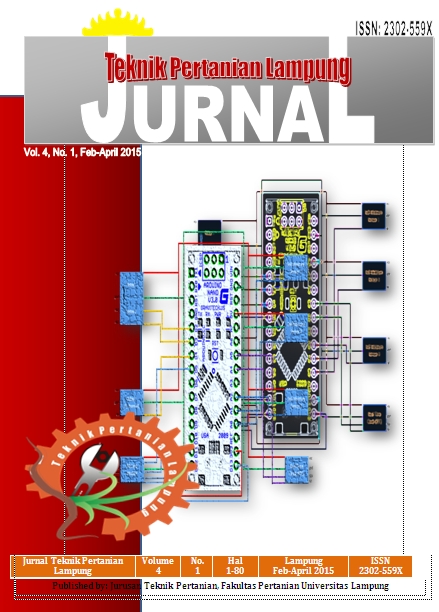A STUDY ON LATEX DRYING CHARACTERISTICS WITH DIFFERENCE OF THICKNESS USING GREENHOUSE EFFECT DRYER
DOI:
https://doi.org/10.23960/jtep-l.v4i1.%25pAbstract
Latex just been tapped has a high level ofmoisture content. To be useful for production, latex should be dried toreducewater content. Latex drying by rubber farmers is commonly to do conducted in opened areas for 14 days
with a very thick size of latex. Therefore, we should be solutions to make latex drying faster. This research, latex
dryingwas treatment by using greenhouse effect dryerwith difference of thickness. The aims of this researchwas
to find out characteristics of latex drying using dimension of greenhouse effect dryer is 150 x 70 x 120 cm. Latex
was coagulated on containers, with dimension of containers is 40 x 10 x 15 cm. Latex was formed with an
equipmentwhich intervals of 2, 1.5, and 1 cmand thenslabwas dried. Result of this research, latexwas driedwith
greenhouse for 9 hour/day for 6 days along. Temperatures of greenhouse effect dryer ranged from30 to 500Cwith
relative humidity of approximately 47%. The treatment with thickness of 2, 1,5 and 1 cm has final moisture
content respectively were 9.53%, 8.96%, and 5.87%bb, and drying acceleration during drying process were
0.3773%, 0.4119%, and 0.4445%w/w / day.
Keywords :DryingAcceleration, GrenhouseDryer, Latex,Moisture Content, Thickness
Downloads
Published
2015-07-28
Issue
Section
Articles
License
- Authors who publish with this journal agree to the following terms:
- Authors retain copyright and grant the journal right of first publication with the work simultaneously licensed under a Creative Commons Attribution-ShareAlike 4.0 International Lice that allows others to share the work with an acknowledgement of the work's authorship and initial publication in this journal.
- Authors are able to enter into separate, additional contractual arrangements for the non-exclusive distribution of the journal's published version of the work (e.g., post it to an institutional repository or publish it in a book), with an acknowledgement of its initial publication in this journal.
- Authors are permitted and encouraged to post their work online (e.g., in institutional repositories or on their website) prior to and during the submission process, as it can lead to productive exchanges, as well as earlier and greater citation of published work (See The Effect of Open Access).
Jurnal Teknik Pertanian Lampung

JTEPL is licensed under a Creative Commons Attribution-ShareAlike 4.0 International License.

